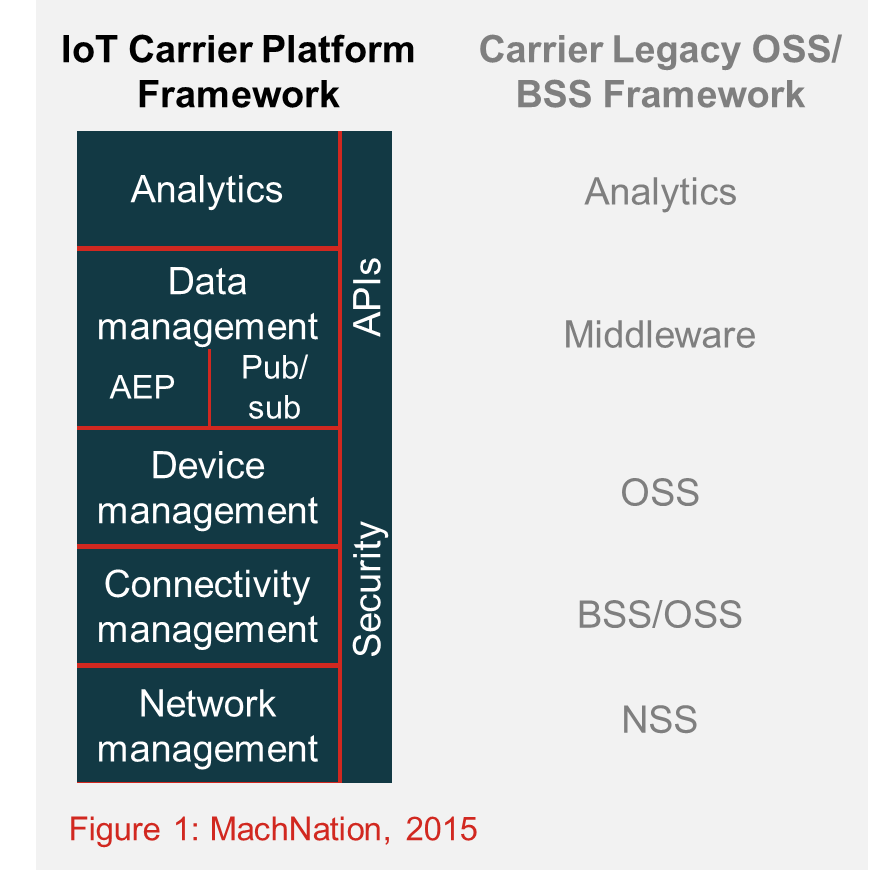A New OSS/BSS Framework for the Burgeoning Internet of Things
For carriers to create a strong IoT business case, they need to move away from legacy technology.
In order to support the tremendous growth anticipated in the Internet of Things (IoT) – MachNation predicts 24 billion devices and $2.1 trillion in revenue in 2025 – carriers are creating new OSS/BSS technology stacks rather than relying on legacy technology.
América Móvil, AT&T, du, Etisalat, KPN, Ooredoo, NTT, Sprint, Tele2, Telenor Connexion, TeliaSonera, Telstra, Verizon, Vodafone and others, are creating these new technology stacks (through buying, building or partnering) in order to:
- Offer new IoT managed services – delivering more than just connectivity increases carriers’ wallet share.
- Enable new business models – facilitating both retail, wholesale and hybrid business models helps carriers diversify their IoT businesses.
- Reduce risks in new markets – providing multitenant cloud solutions with pay-as-you-go pricing helps carriers share risks with their IoT technology partners.
- Support simple integrations of both horizontal and vertical solutions – creating horizontal solutions to support high-volume growth and vertical solutions to differentiate themselves helps carriers profitably scale their IoT businesses.
The IoT Carrier Platform Framework
A five-layer framework (Figure 1) will help carriers manage the end-to-end business of the IoT.

Network Management
This includes technology to help carriers optimize their networks to meet the unique requirements of IoT.
Connectivity Management
This lets carriers manage IoT connectivity elements and aggregate IoT usage data. The best examples of connectivity management come from vendors’ solutions that manage mobile connections (e.g., SIMs in a GSM/GPRS network) to provide connectivity control, alerting and other functionality. Connectivity management solutions also provide billing, rating, reporting and a set of well-documented APIs.
Device Management
This allows carriers to manage IoT devices (e.g., gateways, IoT computers, edge nodes, modules, routers and sensors) to complete firmware updates, apply security patches, set up alerts and provide device-centric reports. Given the incredible heterogeneity of IoT devices, having scalable, flexible and secure device management is one of the most important platform components to ensure a profitable IoT business.
Data Management
This allows carriers to capture and store actual IoT device data and deliver that data to other applications. The best data management approaches comply with a set of capabilities that make it possible for carriers to create horizontal and vertical solutions for their IoT customers.
Analytics
This layer allows carriers to analyze and visualize actual IoT data as well as combine data sources to give customers the ability to understand their data in order to improve their businesses, their lives, their cities or the world.
Delivering the IoT
In the next 1-2 years, leading carriers will implement these new technologies to ensure that they can profitably offer differentiated, vertical-specific, managed IoT services to their customers. Subsequent blogs will discuss each of the technology components of the IoT Carrier Platform Framework in greater detail and provide carrier examples.
Photo by Kelly Hunter with Creative Commons license